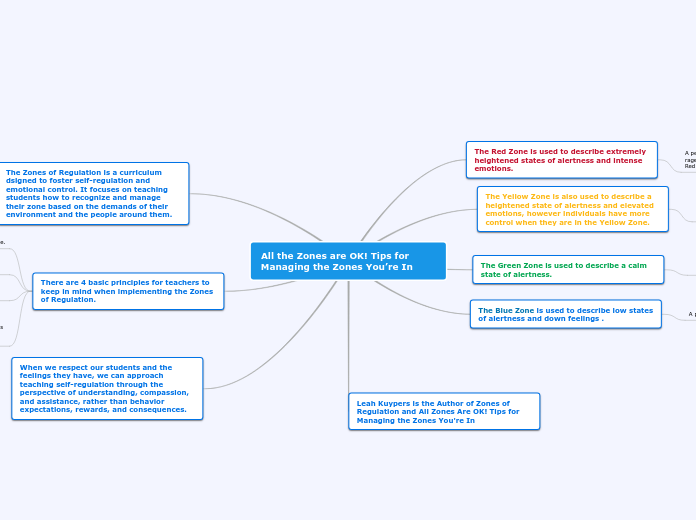All the Zones are OK! Tips for Managing the Zones You’re In
The Zones of Regulation is a curriculum dsigned to foster self-regulation and emotional control. It focuses on teaching students how to recognize and manage their zone based on the demands of their environment and the people around them.
There are 4 basic principles for teachers to keep in mind when implementing the Zones of Regulation.
1.All zones are natural to experience; there is no bad zone.
2. Our Zone is defined by the feelings and internal states we experience on the inside.
3. Our behavior is a byproduct of how we manage our Zone; therefore, consequences should not be tied to a Zone.
4. The context we are in helps us figure out how to manage our Zone so our behavior meets the demands of the social environment, and in doing so we are able to achieve the tasks we are trying to accomplish and/or the social goals we’ve set for ourselves in that situation.
When we respect our students and the feelings they have, we can approach teaching self-regulation through the perspective of understanding, compassion, and assistance, rather than behavior expectations, rewards, and consequences.
The Red Zone is used to describe extremely heightened states of alertness and intense emotions.
A person may be elated, euphoric, or experiencing anger, rage, explosive behavior, devastation, or terror when in the Red Zone
The Yellow Zone is also used to describe a heightened state of alertness and elevated emotions, however individuals have more control when they are in the Yellow Zone.
A person may be experiencing stress, frustration, anxiety, excitement, silliness, the wiggles, or nervousness when in the Yellow Zone.
The Green Zone is used to describe a calm state of alertness.
A person may be described as happy, focused, content, or ready to learn when in the Green Zone. This is the zone where optimal learning occurs.
The Blue Zone is used to describe low states of alertness and down feelings .
A person may feel sad, tired, sick or bored.
